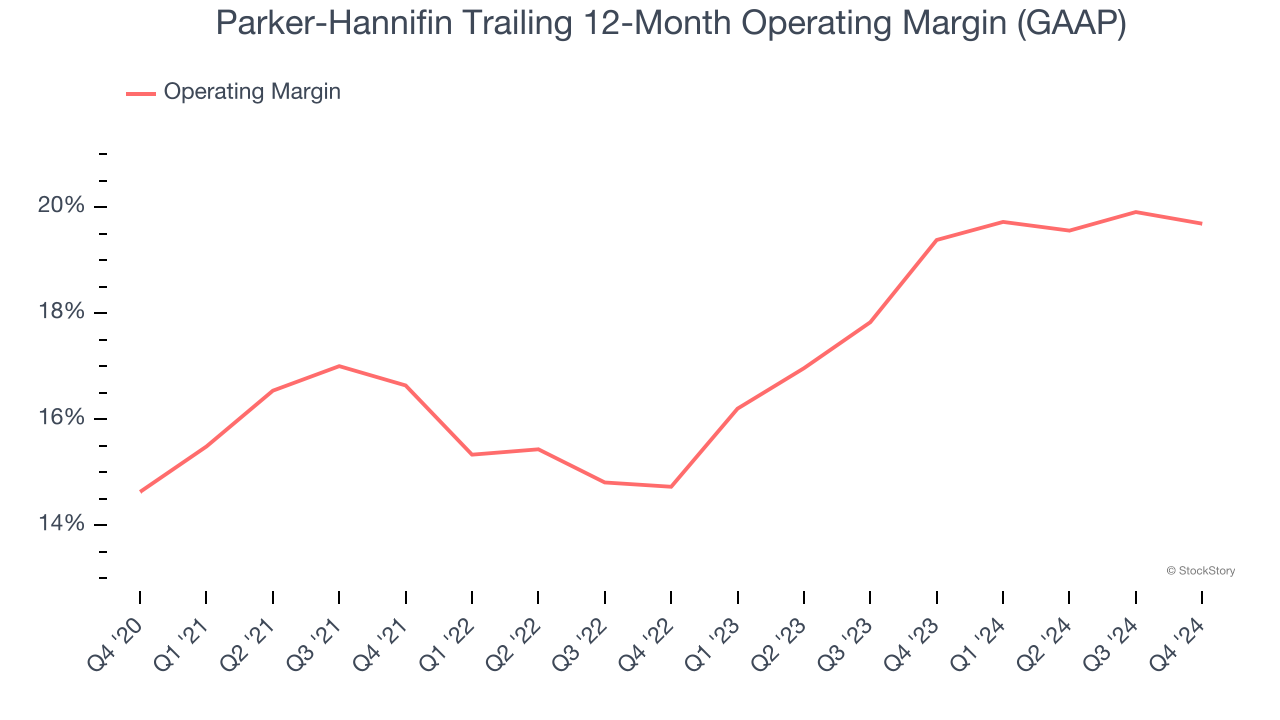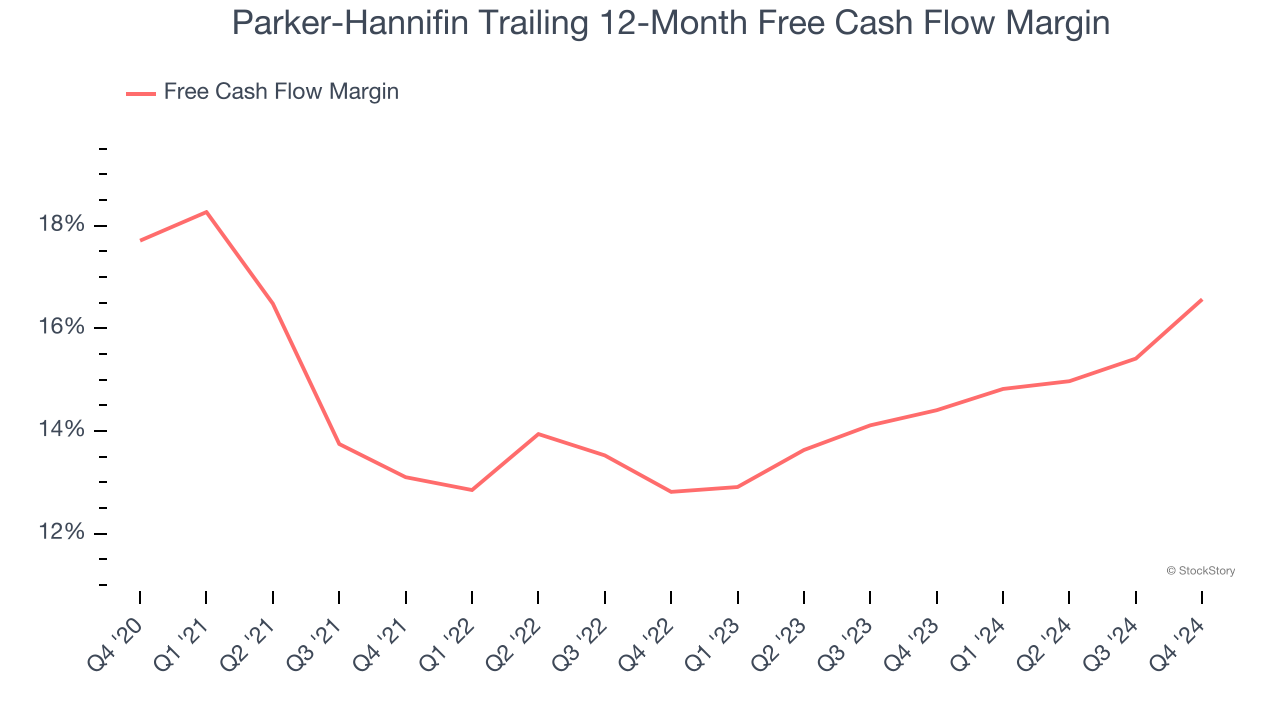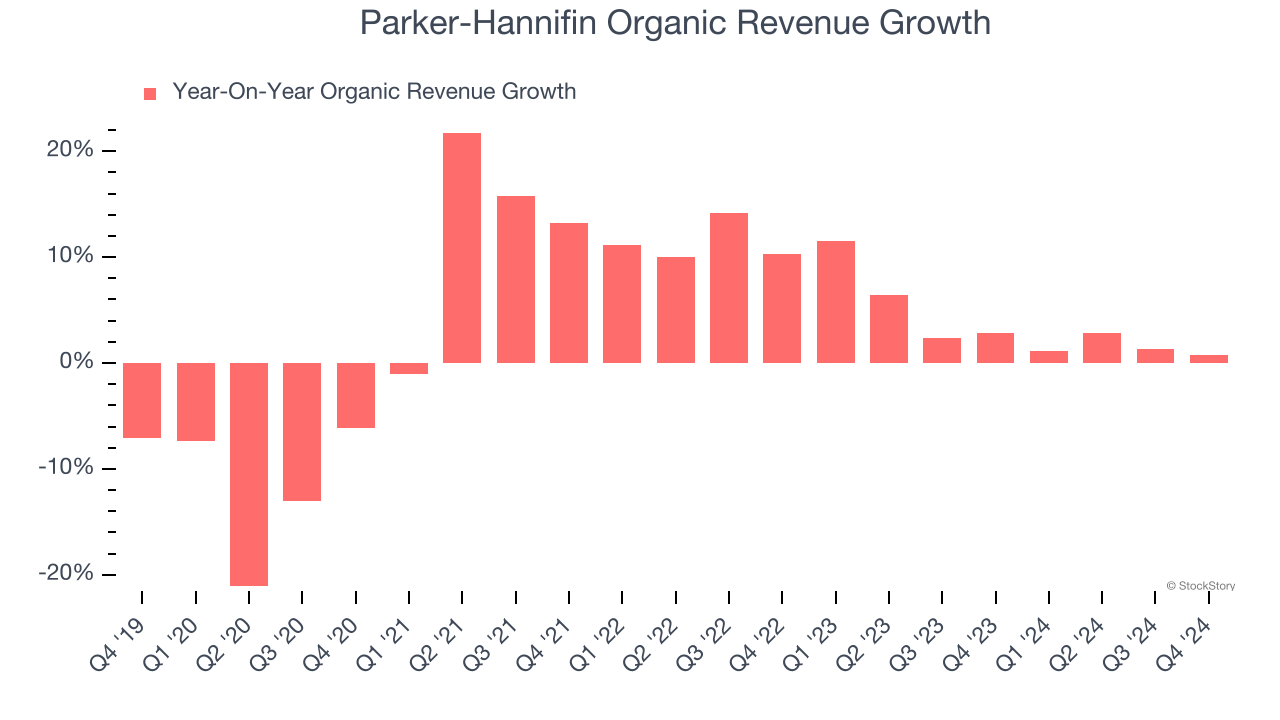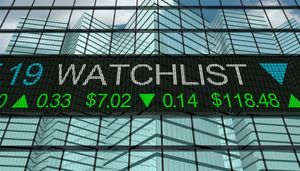
Parker-Hannifin trades at $525.48 per share and has stayed right on track with the overall market, losing 17% over the last six months while the S&P 500 is down 13.7%. This was partly due to its softer quarterly results and might have investors contemplating their next move.
Given the weaker price action, is now the time to buy PH? Find out in our full research report, it’s free.
Why Does PH Stock Spark Debate?
Founded in 1917, Parker Hannifin (NYSE: PH) is a manufacturer of motion and control systems for a wide variety of mobile, industrial and aerospace markets.
Two Positive Attributes:
1. Operating Margin Rising, Profits Up
Operating margin is a key measure of profitability. Think of it as net income - the bottom line - excluding the impact of taxes and interest on debt, which are less connected to business fundamentals.
Analyzing the trend in its profitability, Parker-Hannifin’s operating margin rose by 5.1 percentage points over the last five years, as its sales growth gave it operating leverage. Its operating margin for the trailing 12 months was 19.7%.

2. Excellent Free Cash Flow Margin Boosts Reinvestment Potential
Free cash flow isn't a prominently featured metric in company financials and earnings releases, but we think it's telling because it accounts for all operating and capital expenses, making it tough to manipulate. Cash is king.
Parker-Hannifin has shown terrific cash profitability, putting it in an advantageous position to invest in new products, return capital to investors, and consolidate the market during industry downturns. The company’s free cash flow margin was among the best in the industrials sector, averaging 14.9% over the last five years.

One Reason to be Careful:
Slow Organic Growth Suggests Waning Demand In Core Business
Investors interested in Gas and Liquid Handling companies should track organic revenue in addition to reported revenue. This metric gives visibility into Parker-Hannifin’s core business because it excludes one-time events such as mergers, acquisitions, and divestitures along with foreign currency fluctuations - non-fundamental factors that can manipulate the income statement.
Over the last two years, Parker-Hannifin’s organic revenue averaged 3.6% year-on-year growth. This performance was underwhelming and suggests it may need to improve its products, pricing, or go-to-market strategy, which can add an extra layer of complexity to its operations. 
Final Judgment
Parker-Hannifin’s positive characteristics outweigh the negatives. With the recent decline, the stock trades at 18.5× forward price-to-earnings (or $525.48 per share). Is now a good time to initiate a position? See for yourself in our in-depth research report, it’s free.
Stocks We Like Even More Than Parker-Hannifin
Market indices reached historic highs following Donald Trump’s presidential victory in November 2024, but the outlook for 2025 is clouded by new trade policies that could impact business confidence and growth.
While this has caused many investors to adopt a "fearful" wait-and-see approach, we’re leaning into our best ideas that can grow regardless of the political or macroeconomic climate. Take advantage of Mr. Market by checking out our Top 5 Growth Stocks for this month. This is a curated list of our High Quality stocks that have generated a market-beating return of 175% over the last five years.
Stocks that made our list in 2019 include now familiar names such as Nvidia (+2,183% between December 2019 and December 2024) as well as under-the-radar businesses like Sterling Infrastructure (+1,096% five-year return). Find your next big winner with StockStory today for free.





